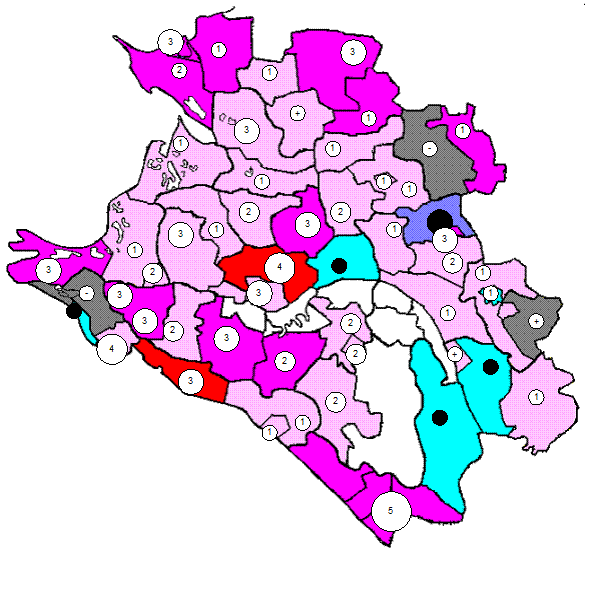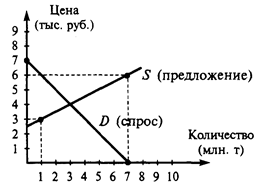Programming Languages
Let's assume that we have studied the problem, designed a logical plan (our flowchart or pseudocode), and are now ready to write the program instructions. The process of writing program instructions is called coding. The instructions will be written on a form called a coding form. The instructions we write will be recorded in a machine-readable form using a keypunch, key-to-tape, or key-to-disk, or entered directly into computer memory through a terminal keyboard. The computer cannot understand instructions written in just any old way. The instructions must be written according to a set of rules. These rules are the foundation of a programming language. A programming language must convey the logical steps ^fthe program plan in such a way that the control unit of the CPU can interpret and follow the instructions. Programming languages have improved throughout the years, just as computer hardware has improved. They have progressed from machine-oriented languages that use strings of binary 1s and 0s to problem-oriented languages that use common mathematical and/or English terms. There are over 200 problem-oriented languages. The most common of them are COBOL, FORTRAN, PL/I, RPG, BASIC, PASCAL. COBOL COBOL was the most widely used business-oriented programming language. Its name is an acronym for Common Busi-ness-Oriented Zanguage. COBOL was designed to solve problems that are oriented toward data handling and input-output operations. Of course, COBOL can perform arithmetic operations as well, but its greatest flexibility is in data handling. COBOL also was designed as a self-documenting language. Self-documenting languages are those that do not require a great deal of explanation in order to be understood by someone reading the program instructions. The self-documenting aspect of COBOL is made possible by its sentencelike structure and the very generous maximum symbolic field-name length of 30 characters. With a field-name length of up to 30 characters, the name can clearly identify the field and its purpose. FORTRAN IV The FORTRAN IV language is oriented toward solving problems of a mathematical nature. The name FORTRAN comes from the combination of the words formula translation. The version of FORTRAN IV has been designed as algebra-based programming language. Any formula or those mathematical relationships that can be expressed algebraically can easily be expressed as a FORTRAN instruction. FORTRAN is the most commonly used language for scientific applications. PL/I PL/I stands for Programming Language I. It was designed as a general-purpose language incorporating features similar to COBOL for data handling instructions and features similar to FORTRAN for mathematical instructions. PL/I is much more than a combination of the good features of both COBOL and FORTRAN, as it has many capabilities that are unique. Yet, although PL/I is one of the most versatile and the most power 3 Answer these questions: 1. What is the process of writing instructions called? 2. What is a code? 3. How must instructions be written? 4. What is the foundation of any programming language? 5. How was the development of programming languages progressing throughout the years? 6. What are the most common problem-oriented languages? 7. What is COBOL? 8. What functions was COBOL designed for? 9. What does FORTRAN serve for? 10. What capabilities has PL/I? 4 Find English equivalents in the text: Языки программирования; блок-схема; кодированная форма; вид, удобочитаемый для компьютера; в соответствии с набором правил; представить логические шаги программы; таким образом; совершенствовать языки программирования; машинно-ориентированные языки; проблемно-ориентированные языки; обычный термин; язык для программирования экономических задач; обработка информации; операции по вводу-выводу данных; гибкость; идентифицировать поле и его цели; решение проблем математического характера; сферы научного применения; универсальный язык; включать свойства; уникальные возможности; многофункциональный и самый мощный из языков программирования. 5 Translate from English into Russian these 3 texts (in variants): 1. RPG II Programming language RPG II is a business-oriented language. The name stands for report program generator. RPG is considerably different from other programming languages. RPG is, in effect, a large prewritten program. The programmer simply indicates the options within the master program that are to be used and, through a set of indicators, when they are to be used. RPG was originally referred to as a "quick-and-dirty" programming language. That is, it is quick for the programmer to write and relatively inefficient in its use of main storage and processing speed. The latest version of RPG, called RPG II, greatly improved the language and gave it additional capabilities. RPG has an advantage over COBOL in that it requires less training for a programmer to become proficient in it. For this reason, RPG is commonly used on many smaller computers and in small business. BASIC BASIC is the acronym for beginner's all-purpose symbolic instruction code. It was developed in Dartmouth College as an easy-to-learn programming language for students and inexperienced programmers. Its key design goal is simplicity. BASIC has become a very popular language in systems where many users share the use of a computer through terminals and it has become a universal language for personal computers. The language BASIC is mathematically oriented, that is, its typical use is to solve problems of a mathematical nature. Because BASIC programs are usually executed from a terminal or microcomputer where input is entered through a keyboard and printed output is relatively slow, problems of a business nature requiring large volumes of input-output data are usually not practical. PASCAL PASCAL was invented in 1970 by Professor Niklaus Wirth of Zurich, Switzerland. It was named after the mathematician Blaise Pascal, who invented one of the earliest practical calculators. PASCAL is a mathematically oriented programming language and, as such, is most commonly used in mathematics, engineering, and computer science departments of colleges and universities. This language is somewhat unusual in that it was designed to be a structured language. This means that the program must be written in logical modules which are in turn called by a main controlling module. Much of PASCAL'S popularity is due to work done at the University of California at San Diego, where PASCAL has been implemented on several different computers including microcomputers. 6 Give a short summary of the text «Programming Languages».
|

 ful of the programming languages, it is not the most commonly used. COBOL and FORTRAN have been available for a longer period of time than PL/I, and many more users work with those languages.
ful of the programming languages, it is not the most commonly used. COBOL and FORTRAN have been available for a longer period of time than PL/I, and many more users work with those languages.


